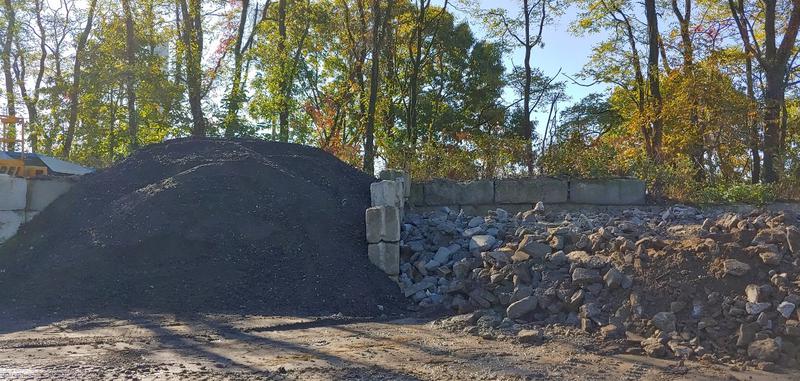
Will It Affect You?
The New York State Department of Environmental Conservation (NYSDEC) recently published its 2021 Regulatory Agenda to the State register. Walden has reviewed and summarized the proposed regulatory updates, so you don’t have to.
In total, NYSDEC is proposing to amend or adopt over 90 different regulations spread across 12 different offices and divisions in 2021. Here is a brief look at the top 10 agenda items that stood out to us:
Division of Environmental Remediation
- Environmental Remediation Programs (6 NYCRR Part 375). The proposed amendments include legislative mandates which would modify the tax incentives offered under the Brownfield Cleanup Program (BCP), new provisions that a property is not eligible for the program unless the site “requires remediation”, and modifications to oil cleanup objectives resulting from five-year reviews.
- Chemical Bulk Storage Regulations (6 NYCRR Parts 596, 597, 598 and 599) and Petroleum Bulk Storage Regulations (Part 613). The proposed Part 597 amendments update the list of hazardous substances and clarify spill reporting requirements. Parts 596, 598, and 599 would be replaced with a new Part 598 to achieve equivalency with 40 CFR Part 280 (Underground Storage Tank regulations) to receive State Program Approval from the USEPA and more. Part 613 would also be amended to achieve this equivalency.
Division of Water
- Long Island Agricultural Water Wells (6 NYCRR Part 602). The proposed changes provide an exemption for temporary dewatering wells, remedial wells, and closed loop geothermal systems consistent with Part 601. The existing regulatory gap for small public water supplies would be removed. The modified regulation reflects that the permit exemption for agricultural water wells on Long Island was eliminated in 1992.
- Water Quality Standards (6 NYCRR Parts 609, and 700-706). The proposed revisions add and revise ambient water quality standards, standard-setting procedures, implementation procedures, and other regulatory provisions.
- State Pollutant Discharge Elimination System (SPDES) Permits (6 NYCRR Part 750). The proposed revisions incorporate new federal criteria and standards.
Division of Materials Management
- Registrations and Classification of Pesticides (6 NYCRR Part 326). Chlorpyrifos is proposed to be added to the list of pesticides that may not be distributed, sold, purchased, possessed, or used for any purpose in New York State.
- Food Donations and Food Scraps Recycling (6 N YCRR Part 350). The proposed new regulations require large food scraps generators to donate food and send excess to an organics recycler if one exists within 25 miles of the generator and has capacity.
- Solid Waste Series Revisions (6 NYCRR Part 360). The proposed final rule includes clarifications and simplifications regarding C&D debris processing facilities, beneficial use of C&D debris, and waste transport. The rule also includes legislation to ensure protection of groundwater at composting and mulch processing facilities is Nassau and Suffolk Counties. Certain landfills will be allowed to continue to receive C&D debris, uncontaminated soil, and rock resulting from land clearing, storm cleanup, and other similar activities.
Division of Fish and Wildlife
- Public Use of State Wildlife Management Areas (6 NYCRR Part 51). The proposed regulations more clearly identify public use compatible with the legal and intended purposes of Wildlife Management Areas for wildlife dependent activities and conservation.
Division of Lands and Forests
- Use of State Lands (6 NYCRR Part 190). The proposed regulations include a new section titled ‘Forest Preserve Health and Safety Land Account and Utility Line/Bicycle Paths’ which establishes a “land account” for forest preserve land that can be used for certain public health and safety projects and for burial of utility lines in road corridors crossing forest preserve lands as well as allowing bicycle trails in these corridors.
Almost all of these proposed modifications require a Regulatory Flexibility Analysis for Small Businesses and Local Governments, as well as a Rural Area Flexibility Analysis (RAFA), seeking ways to enforce regulations while minimizing correlated economic impacts. In the case of small businesses and local governments, the analysis considers the effect of the rule, compliance requirements and costs, professional services, economic and technological feasibility, minimizing adverse impact, small business and local government participation, etc.
Walden will continue to monitor and participate in these rulemaking efforts as well as other changes at the State and federal levels. For example, Walden is a leading firm tracking the development of the changes to the Lead & Copper Rule for public utilities throughout the country. See our most recent LCR blog on this important topic.
Do you think that the regulatory updates will affect you? Call Walden today to discuss how we can help you prepare for these pending changes.
